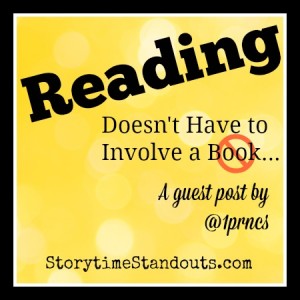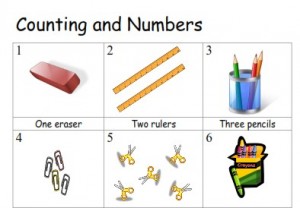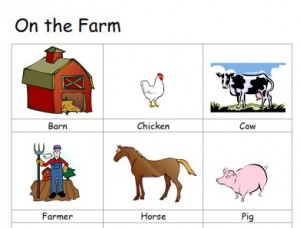On an average day, you might feel like there are too many things that need to be done to stop, sit down, and read. There is no doubt that reading books and enjoying reading are immeasurable necessities in life. However, sometimes there just aren’t enough hours in a day. That doesn’t mean you can’t fit reading in, around, or between.
1. Cook with your children
It’s more than just reading a recipe. Encourage them to do this, yes, but it also allows for you and your child to converse about tastes, amounts, ingredients, and so much more. While making pasta sauce with my daughters the other night, we didn’t follow a recipe, but we talked. Oral language is incredibly important. Listening to and following instructions, asking questions, and completing tasks are all part of cooking even the simplest of meals. Take time to do this with your children.
2. Instructions
My daughters, who both love to read, often come to me and ask how to do something (like play a new game) or what something is. My response is generally, “you can read”. Reading, interpreting, and applying directions is a skill. A necessary skill. If your child looks at the directions and then passes them off to you (as I often do to my husband), get them to read them. Ask them what they are being asked. They will need this skill in the classroom for directions as simple as “write your name at the top” to how to complete an exam.
3. Comics
My youngest daughter has fallen in love with Archie. This brings me great joy because it is one of my favourite memories of being a child. I’ve had parents, in the past, who worry about their child picking up comics versus chapter books. If they’re reading, they’re building fluency and fostering their enjoyment for the task. Don’t stop this– encourage it. It is very fun to listen to your child laugh when they actually get a joke that is in print.
4. Signs and other environmental print
On long car rides, we pull out the iPods (and to be clear– a long car ride to me is from Chilliwack to Langley- I’m a bit of a wimp), but around town or anything under a half an hour, the kids go without. Generally, they’ll bring books with them but we also encourage them to read the signs and pay attention to their surroundings. Okay, maybe my husband encourages our children more strongly than others might, since I get lost quite easily. My children often ask me if I know where I’m going. Most of the time, I do. But, it’s pretty cool to have them recognize landmarks, signs, familiar areas and say, “that signs says…”. Things we, as adults, take for granted might be foreign to kids. Ask them if they know what all of the symbols mean when they’re posted. Ask them if they know what it means when a sign says 42K.
5. TV
Yes. I’m advocating television. I truly believe that your children can watch a huge amount of television and STILL love to read. I see proof of it every single day. Reading the TV guide, an episode summary, or the words that pop up onto the screen further encourage your child’s reading abilities. It all counts. Should they just read the TV guide? Probably not. The key with television, I find, is to talk to them about what they see and what they read. Another great way to improve fluency is Karaoke. Regardless of their singing ability, reading the words as they scroll along the top of the screen, while trying to sing them in unison, is hard to do. Try it with a song you don’t know and see how hard it is to match the beat, the words, and the your voice.
Regardless of how you get them reading, it is about more than books. You absolutely cannot underestimate the power of conversation with any of these activities, including reading a book. Oral language deepens and enhances our understanding of the world around us and, for children, expressing their thoughts and questions is a huge part of building their confidence and establishing connections. So, if you don’t have time for a book, there are words everywhere, all around us– improvise.











































